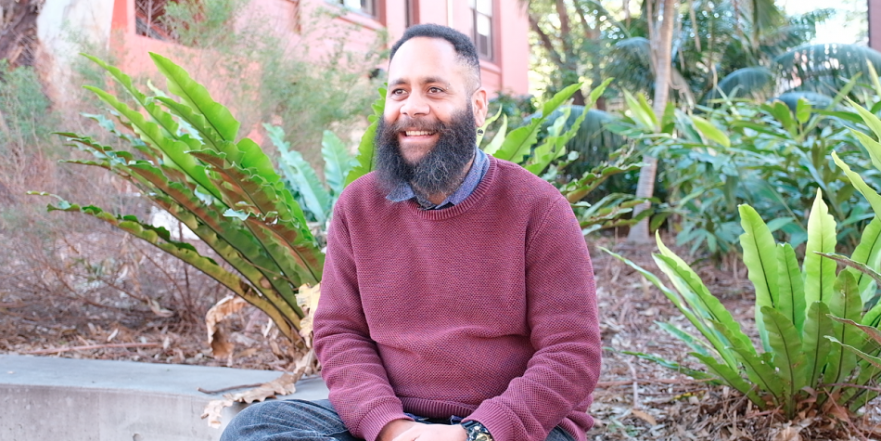By Quinton Vea Vea (pictured above)
Prior to the onset of COVID-19, I was working as the Aquatics Coordinator at NCIE. I looked after the Learn to Swim program and all things pool-related. COVID required us to suspend the service, at least temporarily, to ensure community safety. This left me in an uneasy situation regarding my employment.
NCIE was developing a team that focussed on Social Impact for First Nations peoples in the evaluative & design area. This team is referred to today as Blak Impact. The early start-up period of Blak Impact was new and exciting and the process of building the team to respond to incoming projects was well on its way. Blak Impact hadn’t yet fully employed their whole team and the service turned to engage the skills of existing staff members within other areas of NCIE. Indu Balachandran (Director) & Skye Trudgett (Lead) asked me to join the team; such a relief!
COVID-19 had changed the way that everyone lived, worked, communicated, interacted and adapted to everyday life in a short period of time. And with the gates of NCIE closed to the public, there was an opportunity, but also a commitment, to stay connected to our customers and community.
With our quickly collated team, our first internal project was to measure the impact of COVID-19 on the NCIE community. Our aim was to understand impact through all of our stakeholders. These included staff members, community organisations affiliated with NCIE, community members and customers. Even though it was a very unpredictable time, we were able to engage 22 participants who contributed via interview, written response and/or artwork depicting the impact of COVID-19.
The participants’ responses helped us to understand and articulate the impact of COVID-19. These were clustered into areas of Culture, Community & Country, Education & Employment, Health & Wellbeing and Economic Development.
Culture, Community & Country
Lack of technology for Elders to stay connected, their vulnerability, being isolated from country for First Nations people, and some disruption to cultural practices in urban settings were some of the main themes that came out of the interviews.
Education & Employment
Shifting workplace culture to working remotely (in some cases on country) made it a more flexible experience for some of the participants. Some of the other themes were adaptability of service delivery, and impact on financial security.
Health & Wellbeing
NCIE is well known for our Fitness and Aquatics social enterprise and attracts a lot of the community members/groups who engage in health and fitness through this facility. It was definitely a common theme where many spoke about the closure of the gym and the health implications along with it. The interesting thing is NCIE Fitness and Aquatics centre was a social meeting place for young Indigenous kids and young adults. Not having that social interaction impacted sense of health and wellbeing.
Economic Development
It was identified that NCIE as an organisation needed certain technologies, processes, online platforms, adaptability and digital capability to continue to operate and deliver services during and post COVID-19. This is something that I am sure over 90% of business have also had to adapt to some of the interviews indicated a theme around the opportunity to build a better version of NCIE and taking on change, staying relevant and not becoming redundant in times of crisis.
Not only did Blak Impact produce a report from the findings, we also created a digital storybook/video using some of the interviews and other content to showcase the voices of Community.
One major learning from the report really resonated with me. It was around the processes and barriers of communication having a major impact on First Nations peoples. Not being able to go and see family members or Elders, and having to adapt to online communication was difficult. As a proud Bidjara Man from Queensland, during the whole process of working on this project, I realised I needed to be on country with my family. Having been restricted from travelling interstate has only made that feeling become stronger and stronger and needing that sense of connectedness again.
Both the report and digital storybook are beautifully and respectfully done in a way that can and will resonate with everyone.
Take a look at the report here.
Check out the digital storybook below:


